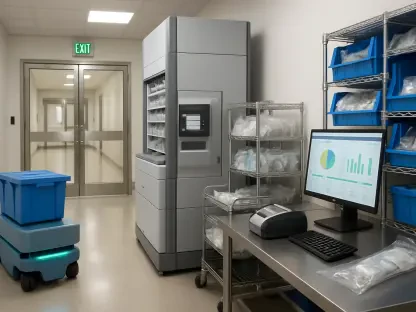The landscape of continuing professional development (CPD) for medical practitioners is undergoing a profound transformation due to the advent of eHealth data analytics. Traditional CPD approaches, which are largely didactic, have demonstrated limitations in truly enhancing the clinical skills and competencies of medical professionals. This has driven the field towards more outcome-focused and workplace-based activities that incorporate clinical performance and patient health data. This transition aligns with medical regulations globally, which aim to improve the quality of practice and patient care.
The Potential of eHealth Data Analytics
Personalized CPD Through Data
eHealth data analytics offers a remarkable opportunity to tailor CPD programs to the specific needs of individual medical practitioners. By actively identifying performance gaps and clinical needs, these tools can create more targeted and relevant learning experiences. This personalization not only enhances the learning impact but also aims to improve health outcomes by ensuring practitioners are well-versed in current and relevant medical knowledge. The ability to analyze vast amounts of data enables healthcare systems to identify trends and areas that require immediate improvement, thus providing a more efficient approach to professional development.
However, the application of eHealth data analytics in CPD is not without its challenges. One of the significant hurdles is the accessibility and quality of the data. For these analytics tools to be effective, there needs to be a robust infrastructure that supports the seamless sharing and integration of data across different platforms. This requires substantial investment in technology and a shift towards a more unified healthcare data ecosystem. Ensuring data privacy and security is also paramount, as medical data is highly sensitive and must be protected against breaches and unauthorized access.
Addressing Interoperability and Resistance
Technological interoperability remains another significant challenge in integrating eHealth data analytics into CPD. Medical practitioners often use various systems and devices for different aspects of their work, leading to fragmented data that can be difficult to consolidate and analyze. Creating a standardized system that allows for easy data integration across different platforms is crucial for the success of eHealth analytics in CPD. This would involve adopting universal protocols and data formats that enable seamless communication between diverse medical technologies.
Resistance to change is another significant barrier at both the organizational and individual levels. Many medical professionals and institutions are accustomed to traditional CPD methods and may view the integration of data analytics with skepticism or reluctance. Overcoming this resistance requires continuous education and demonstration of the benefits that eHealth data analytics can bring to professional development. It also involves fostering a culture of innovation and adaptability within healthcare organizations, emphasizing the value of data-driven approaches in enhancing clinical outcomes and patient care.
Building a Data-Driven CPD Ecosystem
Interdisciplinary Collaboration
The successful integration of eHealth data analytics into CPD necessitates a collaborative effort among various stakeholders, including academia, industry, and regulatory bodies. Interdisciplinary collaboration is essential to develop a robust, data-driven CPD ecosystem that leverages the expertise and resources of different sectors. Academics can provide the theoretical framework and research support, while industry players can offer technological solutions and innovation. Regulatory bodies can ensure that the integration of eHealth data into CPD complies with existing standards and promotes the highest quality of practice.
Further research is crucial to validate the use of eHealth data in CPD and to better understand the broader CPD ecosystem. Studies that examine the impact of data-driven CPD programs on clinical performance and patient outcomes are necessary to build a strong evidence base that supports this approach. Additionally, research can help identify best practices for implementing these programs and overcoming the barriers associated with data accessibility, quality, and interoperability. This collective effort will facilitate the successful adoption and cultural shift needed to integrate eHealth data analytics into CPD effectively.
Future Considerations and Implementation
The landscape of continuing professional development (CPD) for medical practitioners is experiencing a significant shift due to the rise of eHealth data analytics. Traditional CPD methods, which are generally instructional and lecture-based, have shown limitations in effectively enhancing the clinical skills and capabilities of healthcare professionals. This has led the field to move towards more outcome-focused and workplace-based activities. These modern CPD approaches now incorporate clinical performance metrics and patient health data, making them more practical and relevant. This shift is in line with global medical regulations that aim to improve the quality of practice and enhance patient care. By using real-world data and focusing on measurable outcomes, these new CPD methods better support the continuous improvement necessary in modern healthcare. The emphasis is now on integrating learning with everyday clinical practice, leading to more sustainable and impactful professional development for medical providers.









